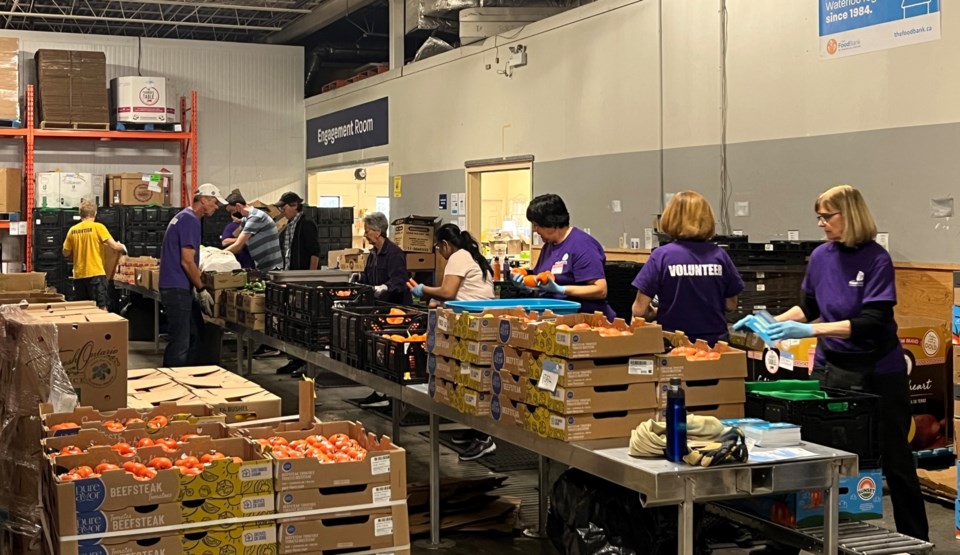When regional council approved doubling its annual contribution to fight food insecurity through the Food Bank of Waterloo Region in this year's regional budget, it was a step in the right direction to combat a crisis that's only worsened in recent years.
It also left questions, such as where will the $1.5 million go? How does it get to people in need? And what role do various agencies play in supporting their communities?
Starting at the top, the Food Bank of Waterloo Region receives 10 per cent of that money to source and purchase more food.
"If you were to use one or two words to describe our role, look at us as a distribution centre," Kim Wilhelm, chief executive officer of the Food Bank of Waterloo Region, said.
"Along with the Cambridge Food Bank, we run the Community Food Assistance Network that supports over 120 agencies. The common goal between all of them is they provide food to those in need. We make sure they have food to run their programs."
Agencies consist of those who supply emergency hampers, community food tables, nutritional outreach programs and shelters throughout the region. By having food supplied, these programs can also focus on other aspects of service such as mental health supports and housing resources.
The Cambridge Food Bank for example, received 21 per cent of the funding and serve residents directly.
The need for support is well known and documented, but further statistics from the FBWR dive into the cost and reach of the programs.
Wilhelm said pre-pandemic, roughly $200,000 a year was spent on food to help serve 33,355 people.
By the end of this fiscal year, that dollar figure will top $2 million, serving 58,000 individuals.
The main drivers of food insecurity are also well known, including the high cost of food, fuel prices and overall cost of living increases, but Wilhelm said there are other factors at play that need to be addressed.
"When we look at solutions, no one thing is going to fix it," Wilhelm said.
"There’s a number things the government can do, including increasing the monthly claw back exemptions for Ontario Works. When someone is on Ontario Works, if they receive income greater than $200, they get claw backs by the government that are quite significant. They can end up losing money."
The other question raised during the regional council funding agreement was a comment made by councillor Mike Harris about bringing the service to a single location.
"When I had a tour of the food bank, there were discussions of facilities for a Waterloo Region Food Bank growing at the seams and a need for more space," Harris said.
"We now know the Cambridge Food Bank is likely in a similar situation. If there is a future ask for capital or facilities, it would be at least my expectation that you're working together to figure that potential solution out," he said.
"I'm a Kitchener guy and I don't care where the facility is in the region, as long as it serves the most amount of people as possible. More facilities isn't always better."
Cambridge Food Bank Executive Director Dianne McLeod told CambridgeToday she was seeking clarification on the comment and emphasized its services were remaining in the city.
Wilhelm, meanwhile, wants to focus on efficiency.
"I think that when we think about food banks, no two operate the same and there's confusion around roles," she said.
"It's important for our two boards to have another conversation to ensure that we have improved efficiency in as many areas as possible. We need to make sure as we each go and look for a new building we're not duplicating specific services."
Anyone able to make a financial donation to the Food Bank of Waterloo Region can do so through thefoodbank.ca.
Food donations can be made at any of the bins set up inside local grocery stores.



